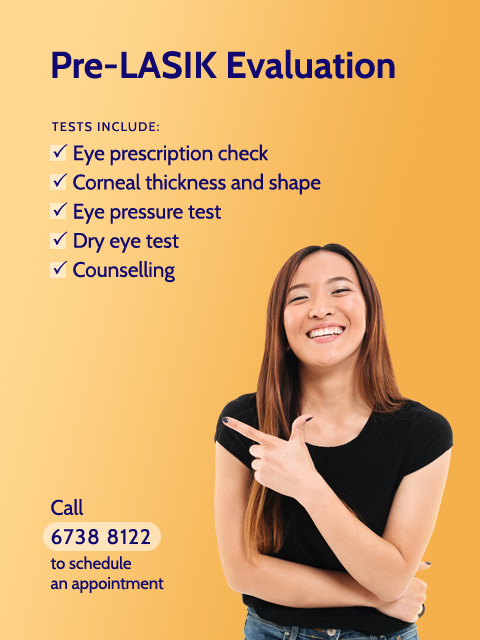YAG LASER
The YAG laser uses Yttrium-Aluminium-Garnet crystal as the lasering medium, hence the abbreviation 'YAG'. The versatility of this laser allows either very short pulses (less than a thousandth of a second when Q switched) or longer pulses to be used.
In ophthalmology, the YAG laser is typically used to:
- Treat posterior capsule opacification
- Create peripheral iridotomies
Posterior capsulotomy
What is a posterior capsulotomy?
Posterior capsulotomy is an outpatient procedure which is sometimes needed after cataract surgery.
This procedure is performed when you have a condition called posterior capsule opacification (PCO) that causes your vision to be cloudy after cataract surgery.
Posterior capsule opacification
During cataract surgery, the hazy natural crystalline lens of the eye is removed, leaving behind a very thin membrane called the 'capsular bag'. The new lens implant is placed within this thin membranous bag, which originally enveloped the crystalline lens.
Although most of the crystalline lens is removed at surgery, inevitably, a few microscopic lens cells remain. Sometimes, many months or years after surgery, these cells divide and spread over the back surface of the capsule and lens implant. This is called posterior capsule opacification or also known as an “after cataract”.
In this condition, light is scattered and causes blurred vision. If your blur vision bothers you, Dr Tan may advise you to undergo posterior capsulotomy.
How is posterior capsulotomy done?
- Numbing and dilating eye drops will be instilled into your eyes
- A YAG laser is used to make a small opening in the opacified posterior surface of the lens capsule, allowing light to pass through.
- This procedure permanently clears the capsule and the lens cells can no longer grow across the new lens implant.
- Procedure is painless and is performed in the clinic
- Duration of procedure: 5 minutes or less
Are there any side effects?
Although rare, there may be some side effects that you may experience, such as:
- Increased intraocular pressure
- Cystoid macular oedema
- Retinal detachment
- Damage to intraocular lens implant (IOL)
You will be given 2 types of eyedrops to use for a week after your YAG laser capsulotomy. These eyedrops will prevent any inflammation or increased pressure from occurring in your eye.
Peripheral Iridotomy
What is peripheral iridotomy?
Peripheral iridotomy is an outpatient procedure that is performed when a patient’s anterior angles are narrow, increasing the risk of developing narrow angle glaucoma.
Narrow angle glaucoma
In patients where the front of the eye is narrow, there is a risk that the drainage angle of the eye may become blocked, causing narrow angle glaucoma. In some patients, they only become aware of this when they develop an attack of angle closure glaucoma with a sudden spike in eye pressure and severe eye pain.
Although the main factor causing this is the original shape of the eye, the pressure of the iris on the lens causes a phenomenon called 'pupil block' which exacerbates the problem. Aqueous fluid that is unable to flow past the pupil pushes the iris forward and makes a narrow angle even narrower. Another situation where aqueous may not be able to flow past the pupil is where an Implantable Collamer Lens (ICL) is implanted into the eye.
[TO INSERT PIC ON PUPIL BLOCK – see example in word]
To prevent pupil block and the subsequent rise in pressure of angle closure glaucoma, the YAG laser is used to make an opening in the periphery of the iris, so that the aqueous fluid can flow through this new opening at times when it is unable to flow past the pupil.
Laser peripheral iridotomies in Asian patients are often performed with both the solid state (e.g. Iridex 577 yellow diode laser) and YAG lasers, since their irides are very thick and the opening is very difficult to make with the YAG laser alone. Mild discomfort may be felt at times during the procedure, which is also performed in the office and takes about 10 minutes.






Safety, Quality, Care and Concern